7 Tips for Thru Hiking the Appalachian Trail
Thru hiking the Appalachian trail is no easy feat, and like with any thru-hike there is a lot of planning involved before you can even get started. How will you break up the hike? How will you stock up on food? What is the best food to bring? Where will you camp? And those are just the things that you think of right off the top of your head, what about all the things you didn't think of! Well, in today's post we have brought on fellow outdoor adventurer and thru-hiking expert, Greg Seymour of the "Appalachian Trail Tales Blog", to give us his 7 best tips for planning a thru-hike of the Appalachian Trail, and we hope that by the end of this post you will feel better prepared and ready to take on this epic American thru-hike. To learn more about Greg, check out his bio at the bottom!
“I’m going to hike the Appalachian Trail.”
More and more this statement is finding its way onto prospective wanderers’ bucket lists or muttered by individuals seeking a bridge across the gulf of one life event to the next. Thru-hikers are, more often than not, in transition: from college to workforce, married to divorced, or in me and my wife’s case, from Costa Rica expats to repatriation to the United States.
This trend has been propelled by the popularity of two best selling books, Wild by Cheryl Strayed and A Walk in the Woods by Bill Bryson. Each glorifies the concept of walking on a whim. Hiking some long trail, in the cases of the aforementioned authors the Pacific Crest Trail or the Appalachian Trail (AT for short) respectively, in order to workout ones’ life issues.
The stark reality is only 25% of those who set out with the intention of thru-hiking the Appalachian Trail complete their quest. The term “thru-hike” means to trek the entirety of a long trail in any 12 consecutive months. My wife and I completed the 2,200 miles of the Appalachian Trail in 2017. We trudged up and clambered down mountain after mountain, through 14 states, taking over 5,000,000 steps (take that Fitbit fanatics).
We were an unusual demographic for the feat:
First, we hiked in our mid-forties when most aspiring thru-hikers are in their 20’s.
Secondly, were hiking as a couple. It’s hard enough for one person to dodge ailments, injury, and fatigue, never mind two.
Finally, in all our life leading up to our hike, only once had we camped outside for more than two consecutive nights. Once.
Despite the odds, we made it. We went from backpacking neophytes to experts in half a year.
So without further ado, here are 7 tips that will help you prepare for an Appalachian Trail thru-hike:
GRAB MY [FREE] OUTDOOR BACKPACKER STARTER KIT:
I created the Ultimate Outdoor Backpacker Starter Kit for you (and it's FREE)! This starter kit is filled with 14 pages of my best hiking and backpacking tips to help you learn what it takes to become a safe, confident, and self-sufficient outdoor backpacker!
1) Define Your Purpose for hiking the appalachian trail
I know what you are thinking … I am going to walk the Appalachian Trail, that’s my purpose. Duh. Yes, but there is a distinction between hiking on the AT and completing a thru-hike of the Appalachian Trail. Both are wonderful activities, the later however takes focus and endless tenacity.
It’s important to acknowledge what exactly it is you are signing up for when you decide to thru-hike the Appalachian Trail. It means hiking 8 to 12 hours a day, 6 or 7 days a week. It means hiking in all types of weather – rain, extreme heat, and possibly snow. It means climbing and descending elevation gain and loss equivalent to 16 Mount Everest summits. It means being away from all that is normal and sleeping in a tent or hammock for 5 to 7 months. And, it means having achy bones and sore feet every day of your hike and for months after. My wife and I agree, thru-hiking is the hardest thing, both mentally and physically, we have ever done … and it’s awesome.
For us, our purpose was to walk to and summit the mountain in the above photo, Mount Katahdin, Maine. The only “outs” we gave ourselves was if one of us incurred a serious injury or there was a family emergency at home. Otherwise, we weren’t stopping. Knowing and stating your purpose will help you forge ahead when your body aches, all your gear has been wet for days, and you are simply tired of walking.
There is a popular travel saying that states, “It’s the destination not the journey.” This works if you are taking a vacation to some distant country, but not so much for completing a thru-hike. It is true on a thru-hike you will meet incredible people, see wondrous sites, and commune with nature, but if you focus solely on the journey, you will never complete your goal. Let’s compromise and say, “It’s the destination AND the journey.”
2) Prepare the Way & Test your Appalachian Trail thru-hike Gear
Want to know a dirty little secret? There really is no way to train for hiking up and down mountain after mountain ten hours a day for six months other than hiking up and down mountains ten hours a day for six months.
You can’t really plan to hike the Appalachian Trail either. Well you can, but you will be thwarted. It might be weather, an injury or just plain fatigue but your plans will change over the 2,200 miles of trail you must traverse.
You can, however, prepare for this journey. Many of the points that follow are “preparing” type thru hiking tips but let’s start with the obvious. You need to get to know your gear and use it in adverse conditions.
There is no way to know that your rain gear is going to fail unless you get out in the rain and use it. There is no way to know if your backpack is going to cause you shoulder pain or rub your waist raw when laden with 30 pounds, unless you – you got it – hike many miles with a full pack. The same goes with shoes and really all the other gear you will need on your trip.
For example, I remember checking into a hotel in Hiawassee, Georgia, only 52 miles into the journey, and seeing hikers strewn about all nursing foot issues caused by improper footwear and overuse. Had the hiker walked miles in their shoes with a full pack before they started they could have switched to a better fitting shoe and prevented most of these injuries, some of which were debilitating.
So before you head out, be sure to test your gear, and get recommendations from others who have gone before you on the best Appalachian Trail thru-hike gear list.
GRAB MY [FREE] FULL BACKPACKING PACKING CHECKLIST!
Want a full list of everything I recommend to take backpacking with you? Download our free backpacking packing checklist below! This download also includes my layering tip-sheet PLUS 25+ backpacking food ideas.
Then head over to our day hiking gear page to read about why we recommend the gear we do!
3) Appalachian Trail Mileage - Plan to start low & work up to higher mileage days
This preparation tip goes hand in hand (or is it foot in boot) with the last tip. You must have a plan to combat “race day” adrenalin. Runners will know what I am talking about. Starting a race out too fast and bonking as you get toward the end.
On a thru-hike the ramifications are much more serious. Starting the Appalachian Trail out too fast can cause irrecoverable injury. It can happen so easily, you make friends with a group and you all want to stick together. However, they want to do big miles and you don’t want to disappoint them, so you end up hiking the first 20-mile hike of your life. Cardiovascularly you are great, but you shred your feet, get shin splints or a stress fracture. If this does not end your hike you will need to, at a minimum, take several days off. We saw hiker after hiker drop out because of injury caused by high mileage early on.
It’s my opinion that the average hiker should start a thru-hike in good, but not great, physical condition. The reason is simple; the majority of hikers do not have mountains to train on. Therefore, even if they are fit and can run a half-marathon or walk 20 miles in flat Florida (or any other non-mountainous state) their body will get destroyed if they try the same mileage up and down mountains carrying a full pack.
After one month on the trail, fitness levels normalize – everyone is now a long-distance hiker. For at least the first three weeks the novice hiker needs a mileage plan.
Our Appalachian Trail Mileage Plan:
First Week - No more than eight miles per day
Second Week - 10 miles max per day
Third Week - 12 miles max per day
Fourth Week - 14 miles max per day
That was the plan, in reality we actually stretched out the 12 mile per day schedule an additional week – our bodies told us to, and we listened.
I credit this low mileage plan (along with getting to know our gear beforehand) with allowing us to complete the trail injury free. Not even one blister between my wife and I.
4) Money Matters - Hiking the Appalachian Trail Cost
You might be surprised how much it costs to hike the Appalachian Trail and wander around in the woods for six months. Everyone has their own view of the type of hike they would like to have but a rough budget can be arrived at. The number that is thrown around most frequently is $1,000 a month for on-trail expenses. This does not include cost of gear or getting to and from the trailhead.
It’s not just Appalachian Trail food to fuel day after day of hiking that one needs money for. The occasional hostel or hotel stay, laundry, and calorie laden, beer-guzzling diners out in town are all important to a long-distance trekker’s sanity. Also there may be expenses back at home, car insurance, health insurance, cell bill, etc. Finally, remember what it is you are doing, hiking in rough terrain in inclement weather. Your body and gear is going to suffer. Money should be set aside for gear repair/replacement and doctors visits and extra hotel stays should you become ill or injured.
There are many reasons why a prospective thru-hiker quits and lack of money is at the very top of the list, after injury. Being financially prepared for this trip of a lifetime is imperative.
5) Have a Support System & point person while you hike the appalachian trail
One aspect of a thru-hike often overlooked is a support person not on the trail. While many thru-hikes are accomplished without a point person, we found having my wife’s mom handle mail back and forth eased our trip.
So, how exactly does a support person help? I’ll give you a few examples.
Send them no-longer needed weight from your pack- Most northbound (NoBo) Appalachian Trail hikers start in Georgia in March. Weather during this time of year can be unpredictable and hikers need winter clothes (additional layers, gloves and cap, etc.). Once the NoBo hiker hits Virginia they no longer need cold weather clothes until much later in the trip. Having a point person gives you someone to receive your clothes when you send them home. Believe me, you will love having 3 or 5 fewer pounds on your back.
Receive mail and clothing back when needed - You support person can also mail you your clothes back when it is time to head into the White Mountains of New Hampshire. This is where the majority of thru-hikers retrieve their winter-wear.
To ship newly ordered gear that needing replacing - Since it’s hard to know exactly what town you are going to be in on a certain date it’s good to have a point person to receive gear that had been bought online so that they can pinpoint delivery. My wife and I each bought an extra pair of shoes before our trek and Jen’s mom shipped them out when we needed them.
On a side note, it’s not the smartest idea to pre-buy shoes. Yes, you will wear out several pair (we went through 3 pair of trail runners each), but your foot is likely to change over hundreds and hundreds of miles and you might decide you hate the shoes you bought.
You can see the value of a support person at home. It just makes things easier and you can end up saving money, as you don’t have to buy gear from outfitters servicing desperate hikers.
6) Other tips for hiking the appalachian trail - the case for bringing technology
I believe there are several excellent reasons to use smart-phone technology when you are out in the wilderness.
First is the gloriousness of GPS. On our Appalachian Trail thru-hike we used the paid app called Guthooks. The app was our trail map, guide, GPS, and planner. We could see how much elevation gain the next mountain was going to be or look up the phone number for the next day’s hostel stay. One phenomenal feature of the app is user-enabled comments. You can get real-time updates on water sources, shelter conditions, or even things like noro-virus outbreaks and bear activity.
Next, a smartphone can replace many other extra items. We used our iPhone 7 Plus to take photos and video our entire journey which we were documenting daily for our YouTube channel. The phone replaced an eReader and while it might sound crazy to read after 10 hours of hiking I did use it for that. The phone allows you to get accurate weather information from various apps and websites. The smart-phone replaces an MP3 player. I normally preferred the sound of nature but occasionally I needed some extra motivation to get up a difficult mountain. Oh, in case you didn’t know, no one likes your music selection as much as you do – use your ear buds.
And finally, this one is going to cause tomatoes to get thrown my way. There is value in staying connected to Social Media while on trail. I know, I know, but I have a rationale. My wife and I met so many people online while we were researching the trail that when we started we knew hikers that were ahead of us and behind us. Similar to real-time comments in Guthooks we were able to get intel about the trail from our friends ahead of us and give information to those behind us. This was done mostly through Instagram and Facebook.
If you want your hike to be a Social Media detox or you have a moral objection to technology on the trail just hike on by and ignore this whole section all together.
7) Allow yourself Time before and during your appalachian trail hike
It’s time to wrap up this article about preparing to thru-hike the Appalachian Trail by talking about that precious commodity we call time. Having enough of it before and during a thru-hike attempt can save you money, frustration, and potentially even your hike.
We had decided a year and a half in advance before we set out to conquer the AT. We were living in Costa Rica when we decided the trail would be a great transition back to living in the US. We weren’t quite sure what our next adventure would be after the Appalachian Trail, but we could figure it out over six months of hiking and talking about it.
Not only did a year and a half give us time to wind down our time in Central America it helped us in multiple other ways too. We could wait until the gear we wanted was on sale. Lightweight gear durable enough to withstand six months of abuse is expensive. By having time and shopping wisely, we were able to cut our gear costs by about 45%.
Because we had time, we were able to try out our new paraphernalia in similar environments to the AT. We lived in the mountains of Costa Rica’s central valley and we could walk out our front door and climb mountains similar in difficulty to what we would experience on the trail. We really had a blast (enter sarcastic font here) during the rainy season trying out all our equipment. It was after a soggy eight mile hike that I chose to switch from hiking boots to trail runners. Trail runners dry much more quickly and are lighter on the feet. I call that a win.
Lastly, having time allows you to save for the type of hike you want rather than force your hike to fit the money you have. The difference could be hike ending. For example, say a snowstorm hits on Roan Mountain in Tennessee (like it did for us) and you have to hole up in a hostel for three days when you only had money for one. Then, back on trail, a huge tree limb falls on your tent (like it did ours) breaking a support pole and ripping the thin sil-nylon to shreds. Just two small things – that can easily happen – can bust your budget or cause the rest of your hike to be miserable because all you can afford to eat, even in town, is Ramen noodles.
In a similar fashion, it’s wise to give yourself longer than you think it will take to hike the Appalachian Trail. The majority of AT thru-hikers take five to seven months. We calculated conservatively we would take six months and gave ourselves time and money for seven. Even though we had 2 unplanned sections where we took 3 days off each we finished our thru hike of the Appalachian Trail 1 day shy of 6 months.
Long-distance thru hiking seems to be a trend these days. A prospective hiker decides they want to hike the Appalachian Trail, and by god they are going to do it, and as soon as possible. And … that’s one way to do it. But, if your goal is to not only start but also finish a thru-hike, giving yourself enough time to prepare for and complete the epic challenge will give you the best chance of reaching your goal.
For more great tips on thru-hiking the Appalachian Trail, check out Greg's new book: Appalachian Trail – Thru-Hiking the Appalachian Trail – 100 Tips, Tricks, Traps, and Facts.
You can learn more about Greg on his blog Chica and Sunsets or on YouTube, Facebook, and Instagram.
We hope you enjoyed this guest post from Greg that details 7 awesome thru-hike planning tips for the Appalachian Trail. I know that I've been wanting to do my first longer thru-hike, and have been slowing piecing together parts of the John Muir Trail via weekend warrior style, but one day I'd love to hike the whole PCT, and who knows, maybe even the Appalachian Trail!
Before you leave, be sure to check out these essential hiking & backpacking resources!
Essential Backpacking Hygiene Tips & Feminine Care in the Outdoors
7 Tips to Hiking and Summiting Your First Fourteener Mountain
10 Awesome Hiking Groups and Challenges to Encourage You on Your Hiking Adventures
Have you hiked the Appalachian Trail? Got any additional tips to add to Greg's list? Let us know in the comments!
Cheers,
Allison - She Dreams of Alpine


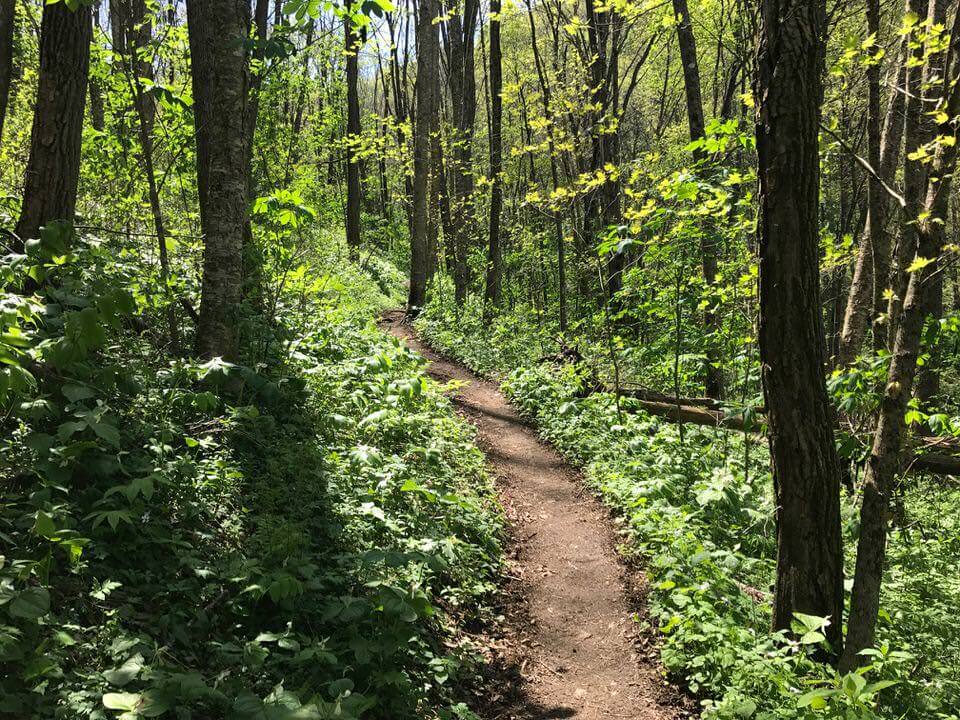








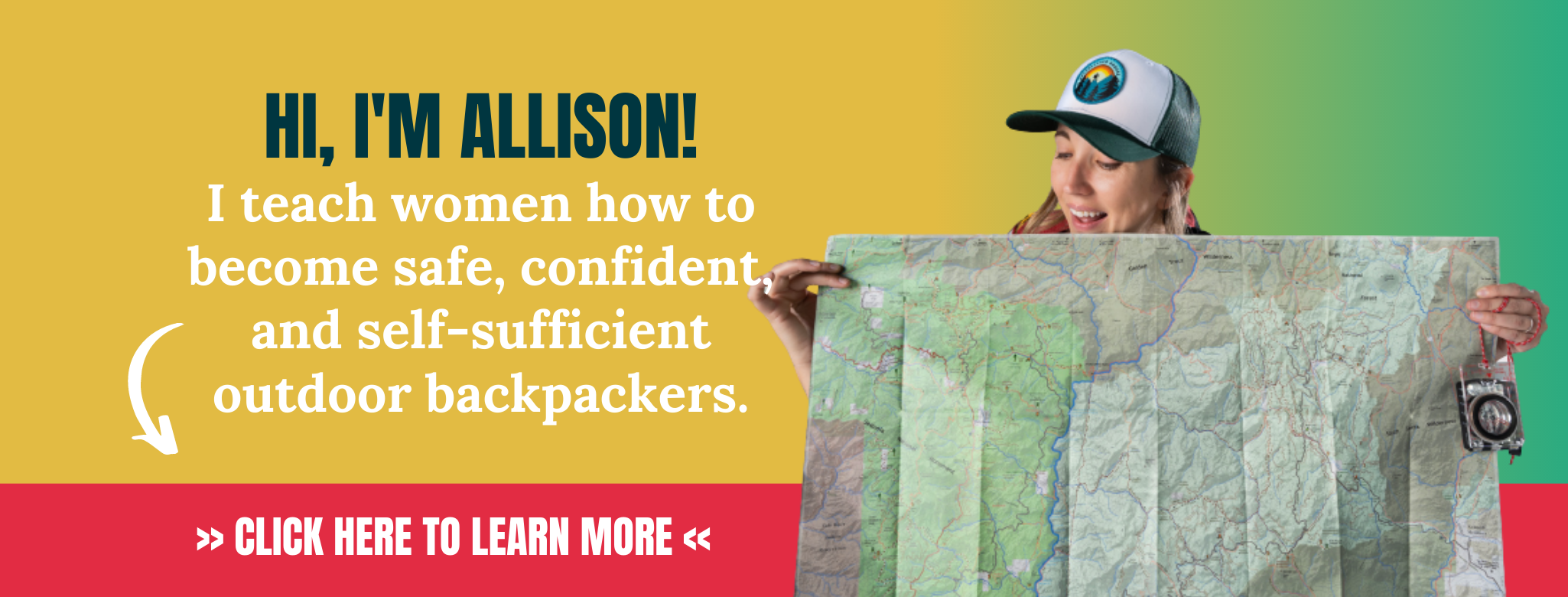

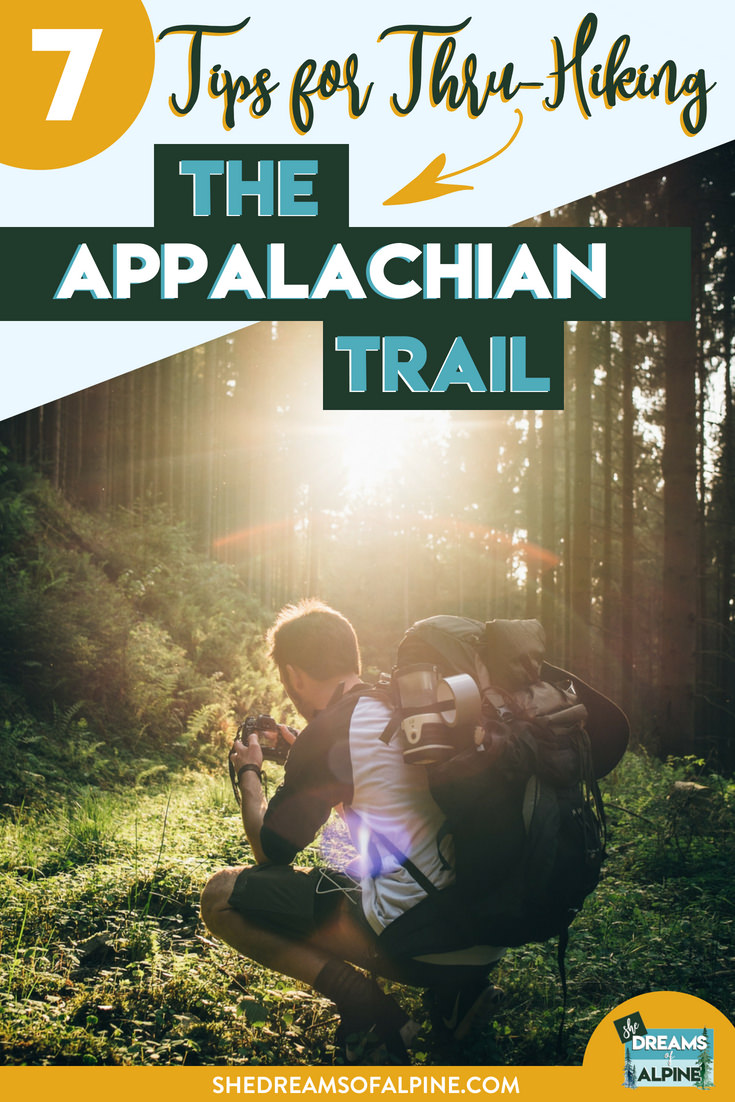
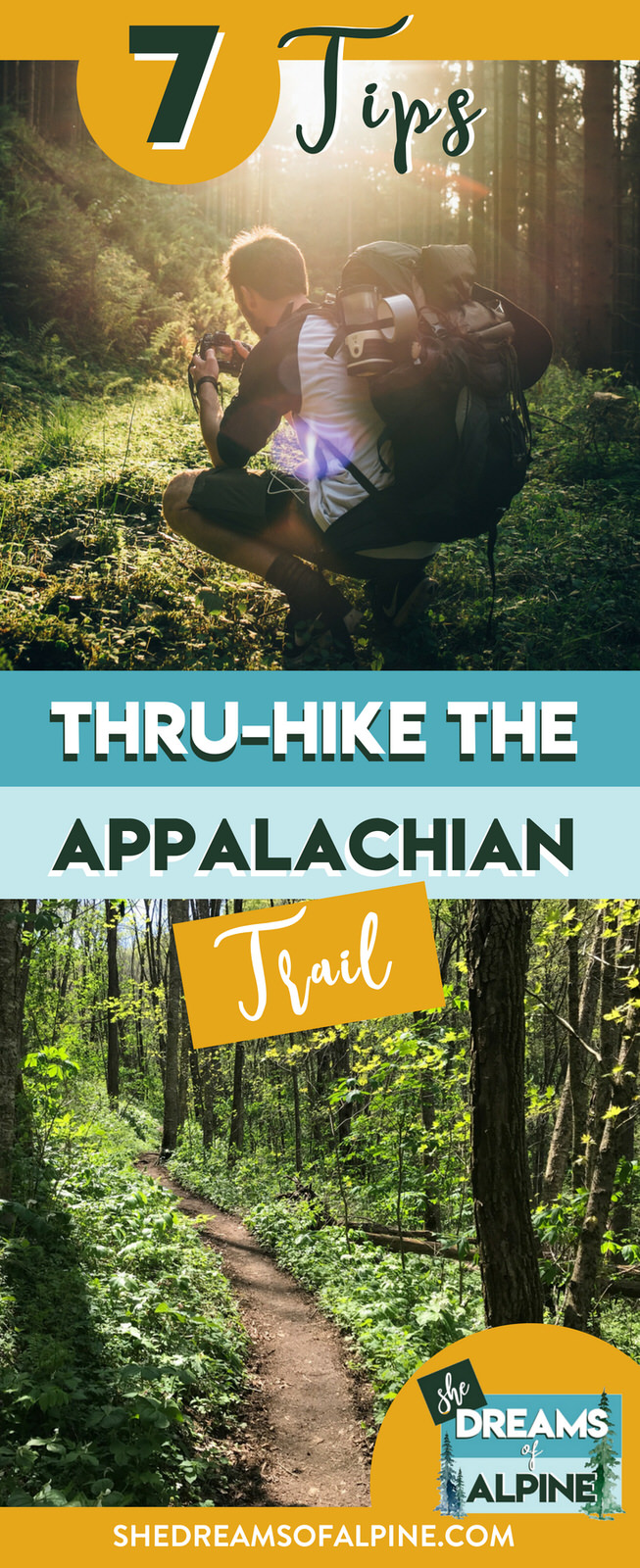


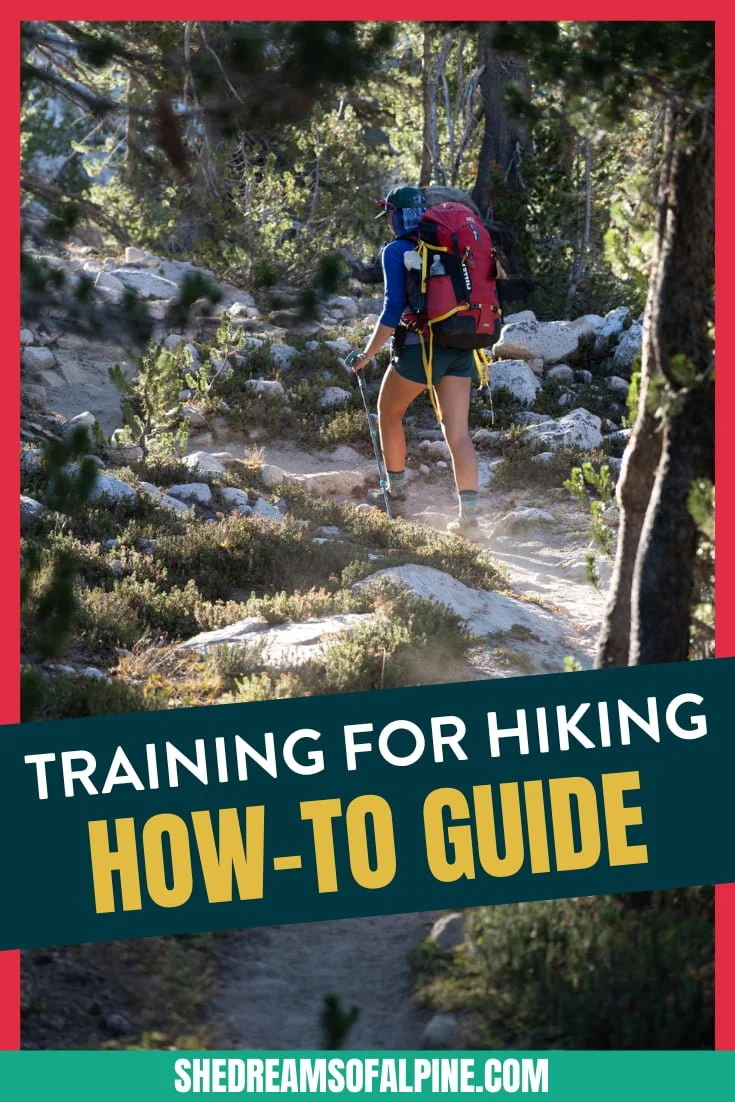






Travel Alone – 57 Quotes to Inspire Your Solo Travels | There’s something magical about traveling alone or going on solo adventures. Traveling alone forces us to grow and test what we are really made of and maybe even go through a transformation of self-discovery. These 57 travel alone quotes celebrate the beauty in going solo. | shedreamsofalpine.com